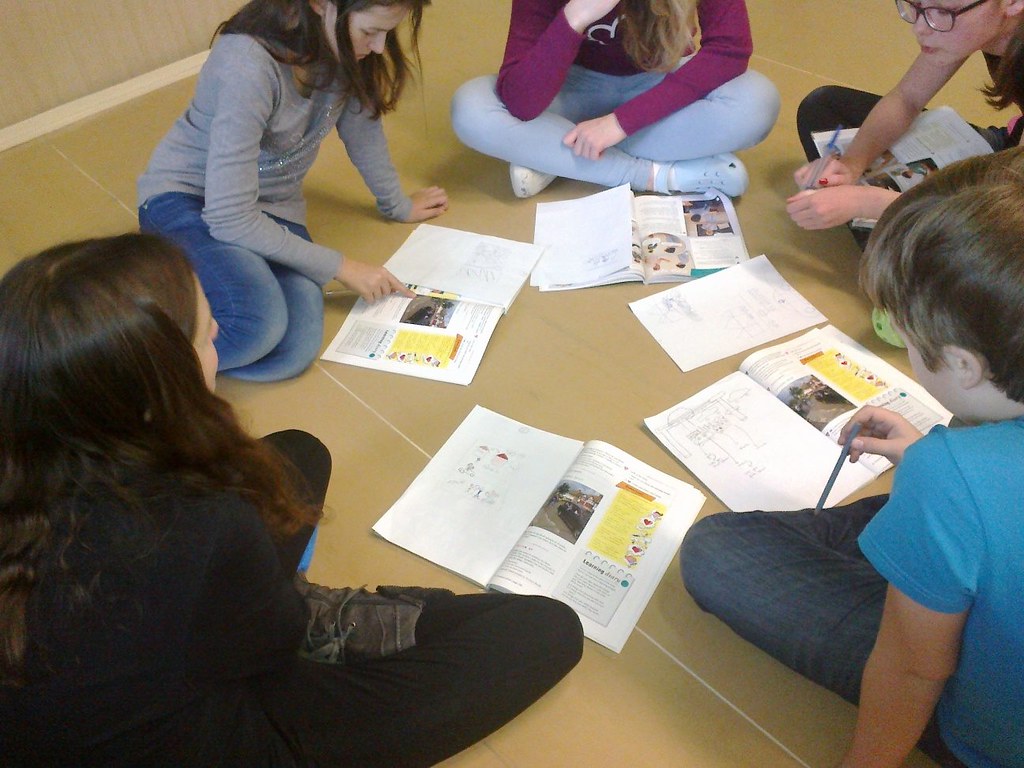Instructional strategies help students engage with various content in your lesson including articles, videos, and other interactive resources. They allow students to examine content through a different lens, collaborate with their classmates to learn how they are interpreting the material, and offer new ways for students to present what they are learning. Lets look at some examples of instructional strategies you can use with your students.
Instructional strategies are a great way to hold students accountable during a classroom activity. Jennifer Gonzalez discusses why it is important to be specific about how your students will interact with the media your are presenting:
Every time I saw [we will discuss the video, story, results, etc] in a lesson plan, I would add a note: “What format will you use? What questions will you ask? How will you ensure that all students participate?” I was pretty sure that We will discuss actually meant the teacher would do most of the talking; He would throw out a couple of questions like “So what did you think about the video?” or “What was the theme of the story?” and a few students would respond, resulting in something that looked like a discussion, but was ultimately just a conversation between the teacher and a handful of extroverted students; a classic case of Fisheye Teaching.
I’ve spoke before about several different websites that offer a library of engaging instructional strategies. Gonzalez provides several examples of low-prep, higher-prep, and ongoing strategies to engage students in classroom activities. Here are a few that I think are particulars engaging:
a.k.a. Values Continuum, Forced Debate, Physical Barometer, This or That
Basic Structure: A statement that has two possible responses—agree or disagree—is read out loud. Depending on whether they agree or disagree with this statement, students move to one side of the room or the other. From that spot, students take turns defending their positions.
This is a great activity because it allows students to move around the classroom. For those that teach high school students, you know how difficult it can be to engage them in the morning. Including activities where students move around the room will help to wake them up at the beginning of class.
Basic Structure: One student assumes the role of a book character, significant figure in history, or concept (such as a tornado, an animal, or the Titanic). Sitting in front of the rest of the class, the student responds to classmates’ questions while staying in character in that role.
You will need to build a level of trust between students before some students are willing to act out a character in front of their peers. For those students that shy to act in front of their peers have them work in smaller groups or during a turn and talk.
a.k.a. Accountable Talk
Talk moves are sentence frames we supply to our students that help them express ideas and interact with one another in respectful, academically appropriate ways. From kindergarten all the way through college, students can benefit from explicit instruction in the skills of summarizing another person’s argument before presenting an alternate view, asking clarifying questions, and expressing agreement or partial agreement with the stance of another participant. Talk moves can be incorporated into any of the other discussion formats listed here.
ENL teachers in my district often use this strategy to help students start conversations. Sentence stems are also helpful when students are providing peer feedback to help keep the conversations constructive.
Instructional strategies are a helpful way to engage and hold students accountable during classroom activities. For more instructional strategies check out Jennifer Gonzalez full article.
Source: Cult of Pedagogy
Photo: eltpics / Flickr

